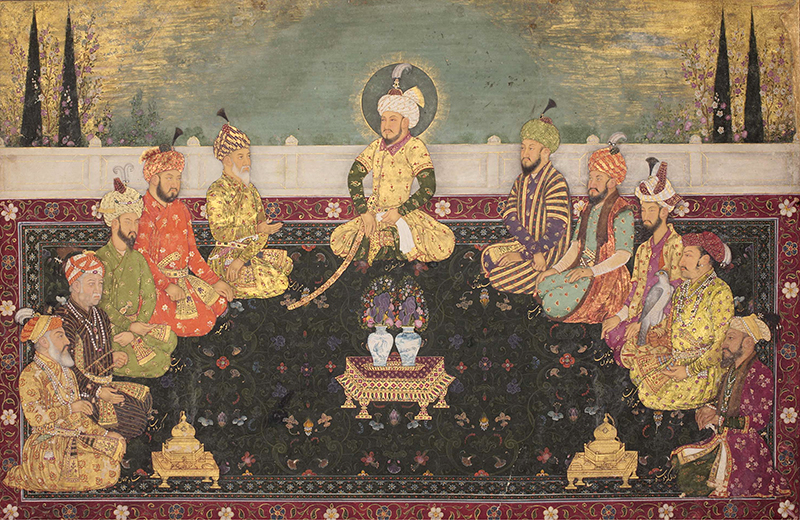Mask of Vaikuntha Vishnu, late 5th century. Learn more about 5th century masks
Designed by 

Persianate Muslim dynastic empire covering, at its largest, most of South Asia, founded in 1526 by the Central Asian Timurid prince Babur (r. 1526–30); with capitals shifting between Delhi, Agra, Fatehpur Sikri and Lahore. Succeeding the Delhi Sultanate the Mughals dominated for nearly 200 years through effective political and administrative policies, first established by Akbar (r. 1556–1605), combining conciliation and conquest. The term ‘Mughal’ (‘Mongol’, Persianised) was applied to the dynasty starting with Babur, though they identified as Timurids and called their empire Hindustan. Akbar actively promoted religious syncretism in the Hindu-majority empire; other rulers until Aurangzeb (r. 1658–1707) remained generally tolerant. The Mughal period was marked by a fruitful exchange between Persianate and Indic artistic and cultural traditions; the patronage of Mughal rulers — especially Akbar, Jahangir (r. 1605–1627) and Shah Jahan (r. 1627–1656) — fostered major developments in miniature painting, literature in Persian and Urdu, Hindustani classical music, and architecture, such as the Taj Mahal. The empire declined in the eighteenth century but remained a symbolic power until formally dissolved in 1858 by the British Raj after the Revolt of 1857.